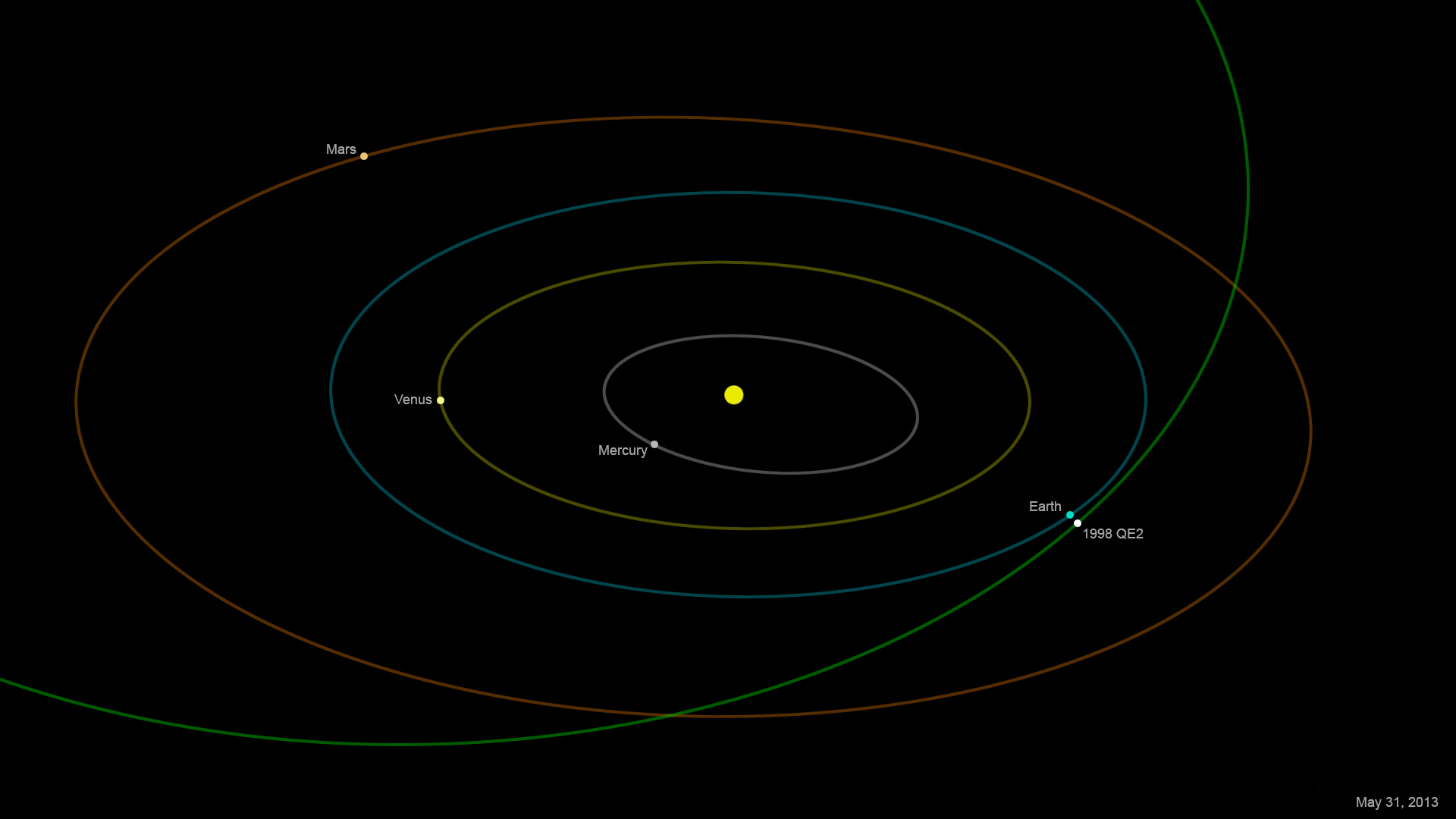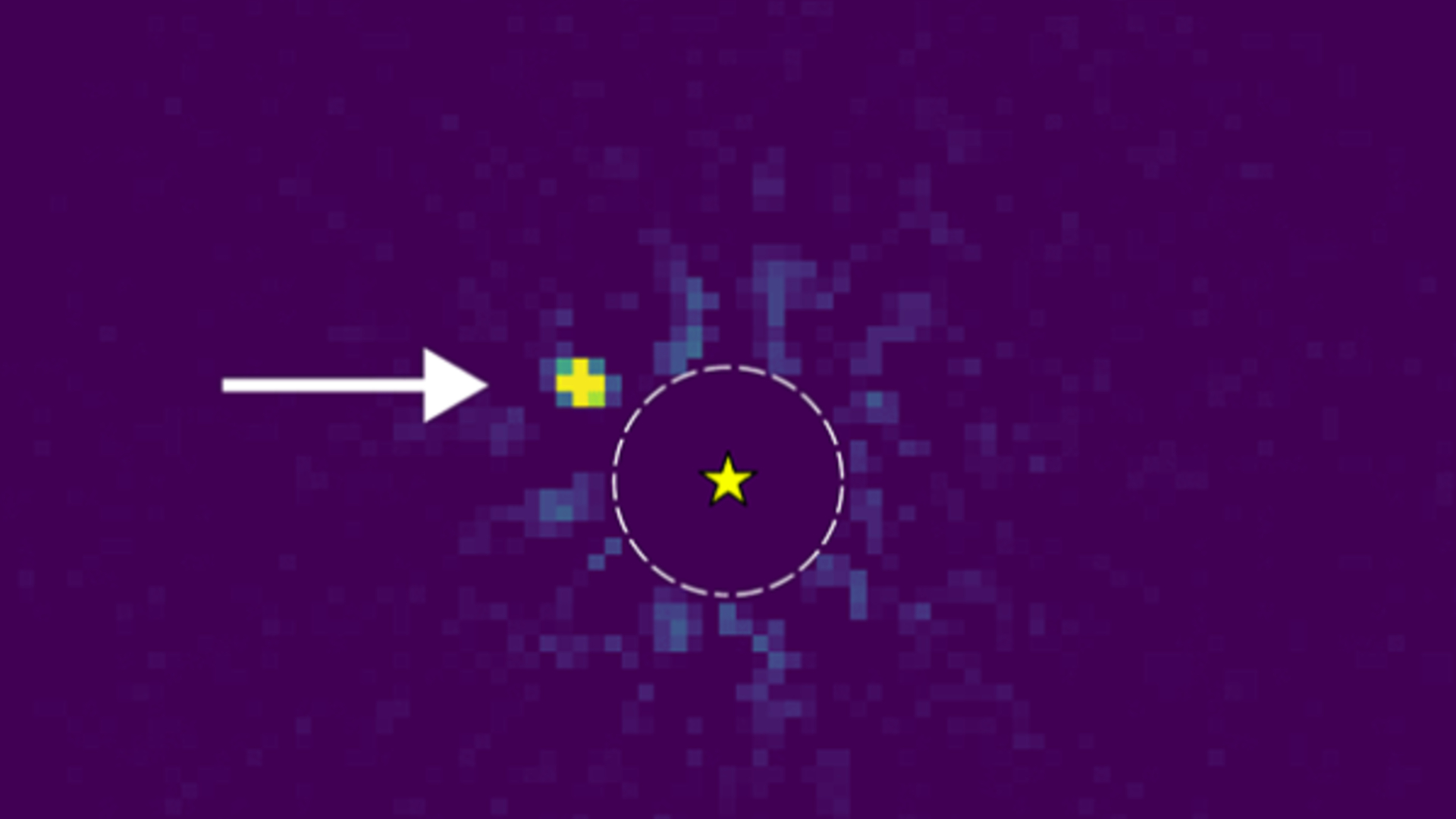Huge Asteroid to Fly Past Earth This Month

A big asteroid will cruise by Earth at the end of the month, making its closest approach to our planet for at least the next two centuries.
The May 31 flyby of asteroid 1998 QE2, which is about 1.7 miles (2.7 kilometers) long, poses no threat to Earth. The space rock will come within 3.6 million miles (5.8 million km) of our planet — about 15 times the distance separating Earth and the moon, researchers say.
But the close approach will still be dramatic for astronomers, who plan to get a good look at 1998 QE2 using two huge radar telescopes — NASA's 230-foot (70 meters) Goldstone dish in California and the 1,000-foot (305 m) Arecibo Observatory in Puerto Rico. [Photos: Asteroids in Deep Space]
"Whenever an asteroid approaches this closely, it provides an important scientific opportunity to study it in detail to understand its size, shape, rotation, surface features and what they can tell us about its origin," Lance Benner of NASA's Jet Propulsion Laboratory in Pasadena, Calif., principal investigator for Goldstone radar observations, said in a statement.
"We will also use new radar measurements of the asteroid's distance and velocity to improve our calculation of its orbit and compute its motion farther into the future than we could otherwise," Benner added.
Asteroid 1998 QE2 was discovered in August 1998 by astronomers working with MIT's Lincoln Near Earth Asteroid Research (LINEAR) program in New Mexico.
The space rock's name is not an homage to England's Queen Elizabeth II, or to the famous 12-deck ocean liner that was retired from service in 2008. It's just the moniker assigned by the Minor Planet Center in Cambridge, Mass., which names each newfound asteroid according to an established alphanumeric scheme that lays out when it was discovered.
Breaking space news, the latest updates on rocket launches, skywatching events and more!
Astronomers plan to study 1998 QE2 intensively from May 30 through June 9, using the Goldstone and Arecibo dishes to learn as much as possible about the asteroid before it slips off once more into the depths of space.
Even from about 4 million miles (6.4 million km) away, Goldstone images may be able to resolve features on 1998 QE2 as small as 12 feet (3.75 m) across, researchers said.
"It is tremendously exciting to see detailed images of this asteroid for the first time," Benner said. "With radar we can transform an object from a point of light into a small world with its own unique set of characteristics. In a real sense, radar imaging of near-Earth asteroids is a fundamental form of exploring a whole class of solar system objects."
NASA leads the global effort to identify potentially dangerous asteroids. Our planet has been pummeled by space rocks throughout its 4.5-billion-year history, and more strikes are in our future.
The planet got a dramatic reminder of this reality this past Feb. 15. On that day, a 55-foot (17 m) object exploded without warning over Russia, just hours before the 130-foot asteroid 2012 DA14 gave Earth a close shave, missing our planet by just 17,200 miles (27,000 km).
Follow Mike Wall on Twitter @michaeldwall and Google+. Follow us @Spacedotcom, Facebookor Google+. Originally published on SPACE.com.

Michael Wall is a Senior Space Writer with Space.com and joined the team in 2010. He primarily covers exoplanets, spaceflight and military space, but has been known to dabble in the space art beat. His book about the search for alien life, "Out There," was published on Nov. 13, 2018. Before becoming a science writer, Michael worked as a herpetologist and wildlife biologist. He has a Ph.D. in evolutionary biology from the University of Sydney, Australia, a bachelor's degree from the University of Arizona, and a graduate certificate in science writing from the University of California, Santa Cruz. To find out what his latest project is, you can follow Michael on Twitter.

